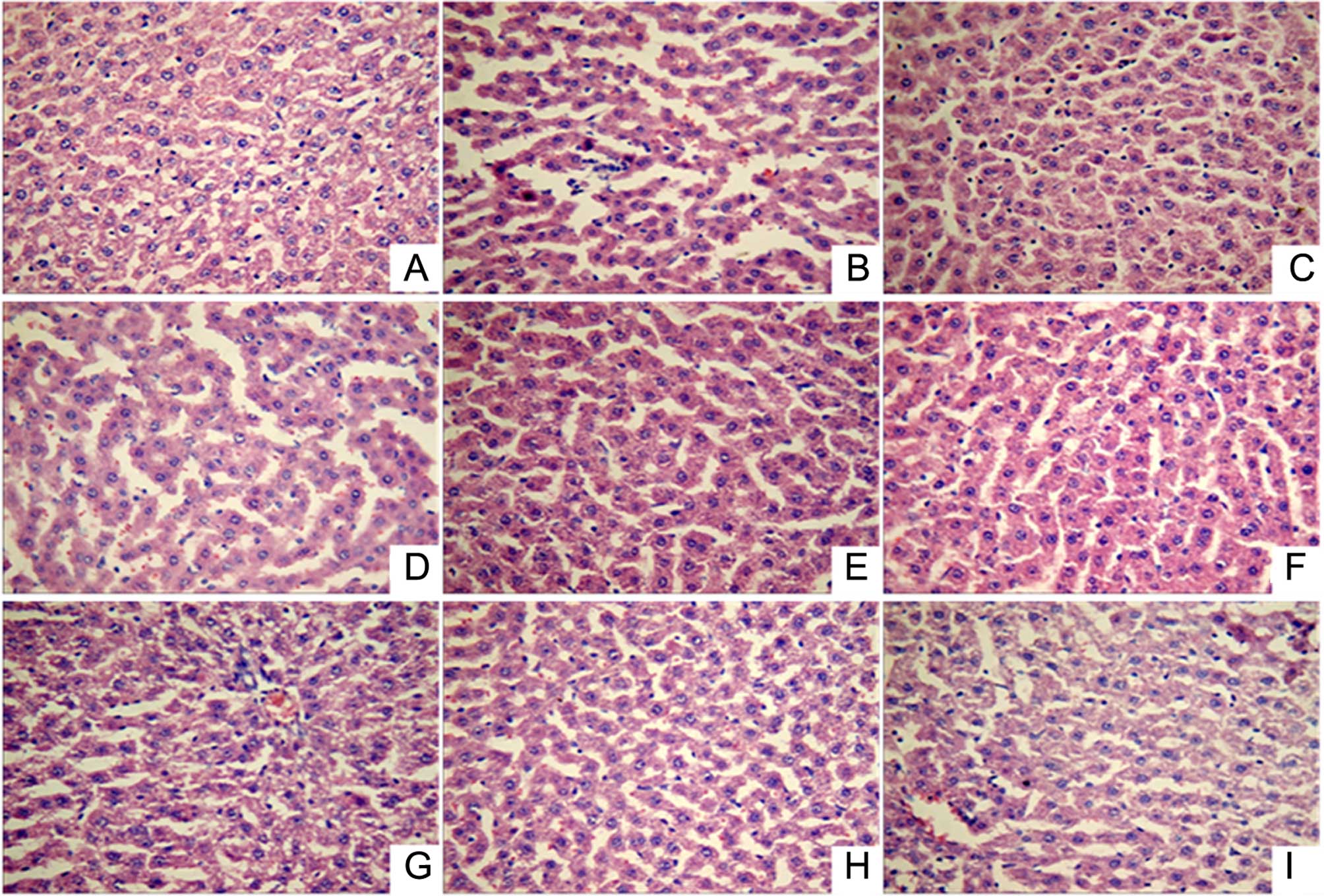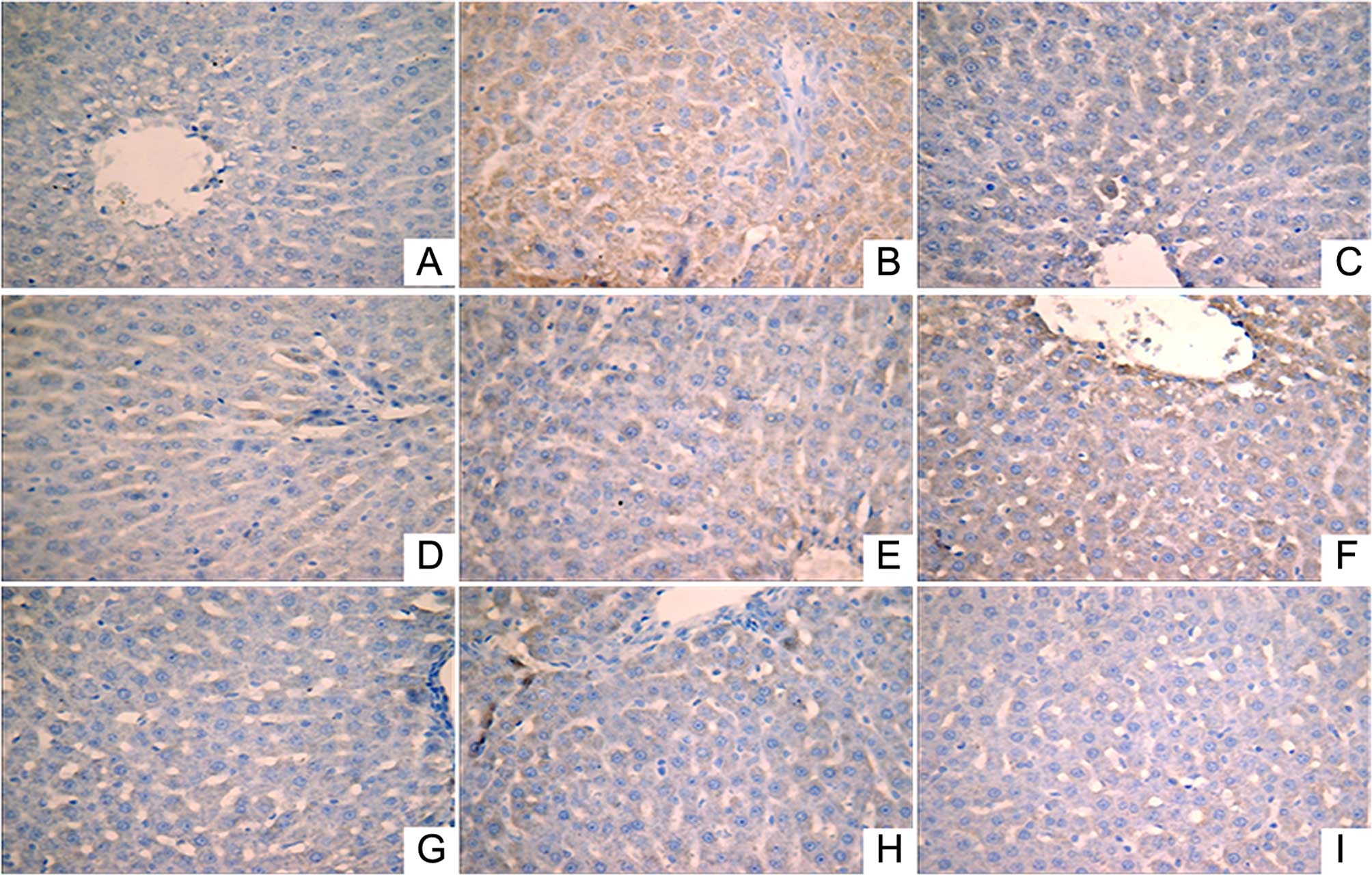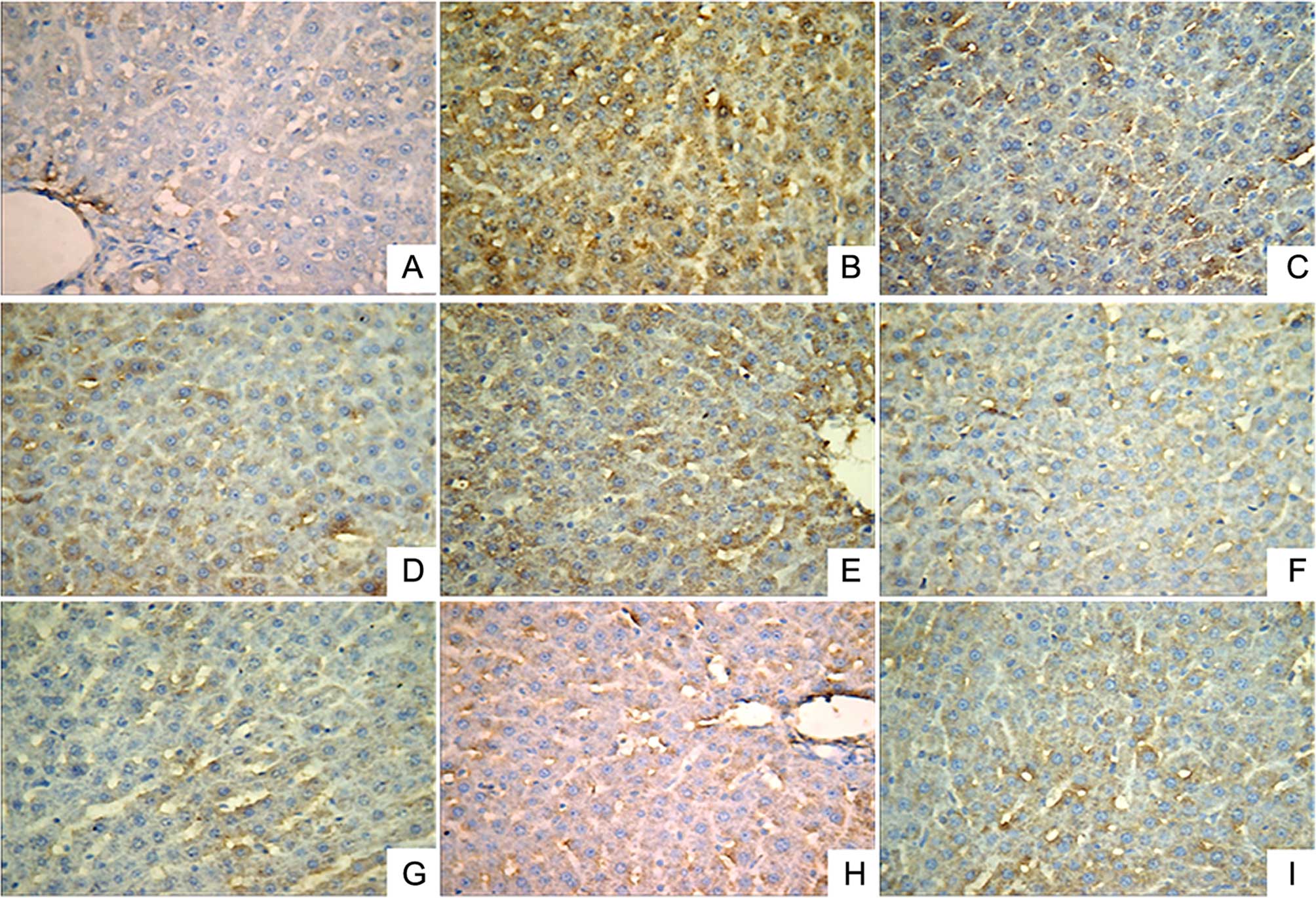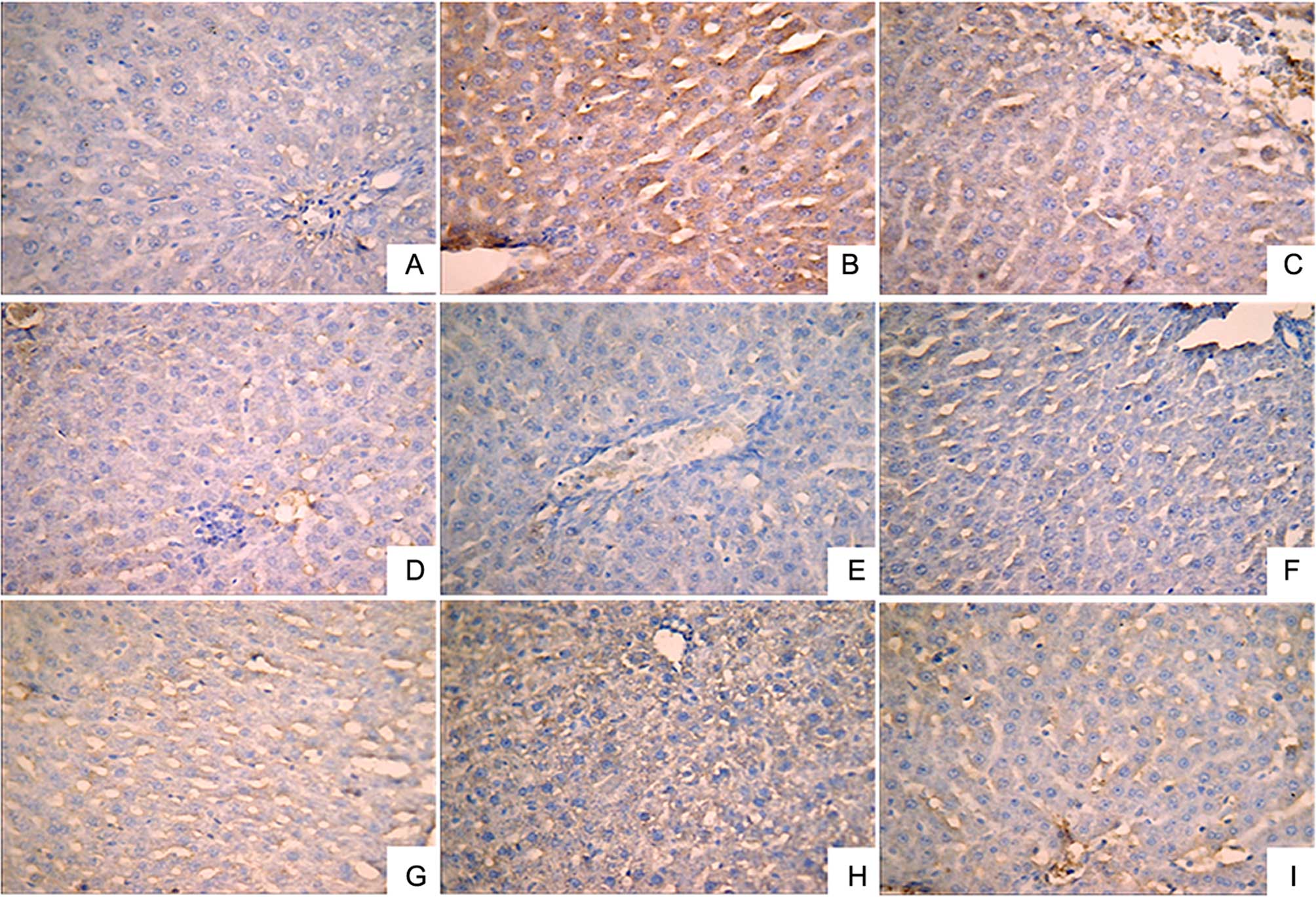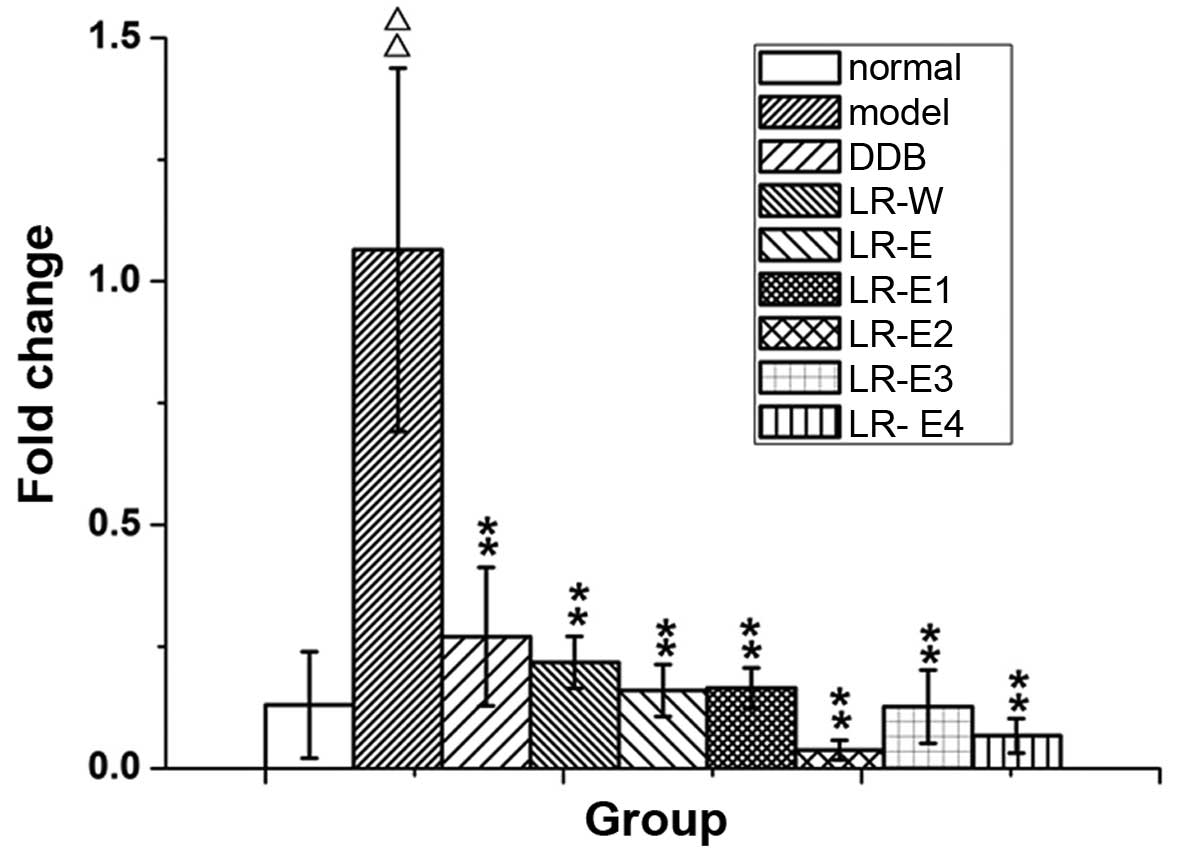|
1
|
Gao B and Bataller R: Alcoholic liver
disease: Pathogenesis and new therapeutic targets.
Gastroenterology. 141:1572–1585. 2011. View Article : Google Scholar : PubMed/NCBI
|
|
2
|
Xie YD, Feng B, Gao Y and Wei L:
Characteristics of alcoholic liver disease and predictive factors
for mortality of patients with alcoholic cirrhosis. Hepatobiliary
Pancreat Dis Int. 12:594–601. 2013. View Article : Google Scholar : PubMed/NCBI
|
|
3
|
Altamirano J and Bataller R: Alcoholic
liver disease: Pathogenesis and new targets for therapy. Nat Rev
Gastroenterol Hepatol. 8:491–501. 2011. View Article : Google Scholar : PubMed/NCBI
|
|
4
|
Levine P, McDaniel K, Francis H, Kennedy
L, Alpini G and Meng F: Molecular mechanisms of stem cell therapy
in alcoholic liver disease. Dig Liver Dis. 46:391–397. 2014.
View Article : Google Scholar : PubMed/NCBI
|
|
5
|
Woo GA and O'Brien C: Long-term management
of alcoholic liver disease. Clin Liver Dis. 16:763–781. 2012.
View Article : Google Scholar : PubMed/NCBI
|
|
6
|
Orman ES, Odena G and Bataller R:
Alcoholic liver disease: Pathogenesis, management and novel targets
for therapy. J Gastroenterol Hepatol. 28(Suppl 1): 77–84. 2013.
View Article : Google Scholar : PubMed/NCBI
|
|
7
|
Ding RB, Tian K, He CW, Jiang Y, Wang YT,
Wan JB and Huang LL: Herbal medicines for the prevention of
alcoholic liver disease: A review. J Ethnopharmacol. 144:457–465.
2012. View Article : Google Scholar : PubMed/NCBI
|
|
8
|
Cheng XL, Ma SC, Wei F, Wang GL, Xiao XY
and Lin RC: A new sesquiterpene isolated from Lindera
aggregata (SIMS) Kosterm. Chem Pharm Bull (Tokyo).
55:1390–1392. 2007. View Article : Google Scholar : PubMed/NCBI
|
|
9
|
Wu Y, Zheng Y, Liu X, Han Z, Ren Y, Gan L,
Zhou C and Luan L: Separation and quantitative determination of
sesquiterpene lactones in Lindera aggregata (Wu-yao) by
ultra-performance LC-MS/MS. J Sep Sci. 33:1072–1078.
2010.PubMed/NCBI
|
|
10
|
Luo Y, Liu M, Yao X, Xia Y, Dai Y, Chou G
and Wang Z: Total alkaloids from Radix Linderae prevent the
production of inflammatory mediators in
lipopolysaccharide-stimulated RAW 264.7 cells by suppressing
NF-kappaB and MAPKs activation. Cytokine. 46:104–110. 2009.
View Article : Google Scholar : PubMed/NCBI
|
|
11
|
Wang C, Dai Y, Yang J, Chou G, Wang C and
Wang Z: Treatment with total alkaloids from Radix Linderae reduces
inflammation and joint destruction in type II collagen-induced
model for rheumatoid arthritis. J Ethnopharmacol. 111:322–328.
2007. View Article : Google Scholar : PubMed/NCBI
|
|
12
|
Yamahara J, Matsuda H, Sawada T and
Kushida H: Biologically active principles of crude drugs preventive
effect of sesquiterpenoid components of the root of Lindera
strychinifolia on experimental liver damage. Shōyakugaku
Zasshi. 37:84–86. 1983.(In Japanese).
|
|
13
|
Zhu M, Luk CT and Lew TH: Cytoprotective
Effect of Lindera aggregata roots against ethanol-induced
acute gastric injury. Pharm Biol. 36:222–226. 1998. View Article : Google Scholar
|
|
14
|
Yi YN, Cheng XM, Liu LA, Hu GY, Wang ZT,
Deng YD, Huang KL, Cai GX and Wang CH: Simultaneous determination
of synephrine, arecoline and norisoboldine in Chinese patent
medicine Si-Mo-Tang oral liquid preparation by strong cation
exchange high performance liquid chromatography. Pharm Biol.
50:832–838. 2012. View Article : Google Scholar : PubMed/NCBI
|
|
15
|
El-Beshbishy HA: The effect of dimethyl
dimethoxy biphenyl dicarboxylate (DDB) against tamoxifen-induced
liver injury in rats: DDB use is curative or protective. J Biochem
Mol Biol. 38:300–306. 2005. View Article : Google Scholar : PubMed/NCBI
|
|
16
|
Gao M, Zhang J and Liu G: Effect of
diphenyl dimethyl bicarboxylate on concanavalin A-induced liver
injury in mice. Liver Int. 25:904–912. 2005. View Article : Google Scholar : PubMed/NCBI
|
|
17
|
Abdel-Hameid NA: Protective role of
dimethyl diphenyl bicarboxylate (DDB) against erythromycin induced
hepatotoxicity in male rats. Toxicol In Vitro. 21:618–625. 2007.
View Article : Google Scholar : PubMed/NCBI
|
|
18
|
Kessova I and Cederbaum AI: CYP2E1:
Biochemistry, toxicology, regulation and function in
ethanol-induced liver injury. Curr Mol Med. 3:509–518. 2003.
View Article : Google Scholar : PubMed/NCBI
|
|
19
|
Albano E: Oxidative mechanisms in the
pathogenesis of alcoholic liver disease. Mol Aspects Med. 29:9–16.
2008. View Article : Google Scholar : PubMed/NCBI
|
|
20
|
Ohno T, Takemura G, Murata I, Kagawa T,
Akao S, Minatoguchi S, Fujiwara T and Fujiwara H: Water extract of
the root of Lindera strychnifolia slows down the progression
of diabetic nephropathy in db/db mice. Life Sci. 77:1391–1403.
2005. View Article : Google Scholar : PubMed/NCBI
|
|
21
|
Noda Y and Mori A: Antioxidant activities
of uyaku (Lindera strychnifolia) leaf extract: A natural
extract used in traditional medicine. J Clin Biochem Nutr.
41:139–145. 2007. View Article : Google Scholar : PubMed/NCBI
|
|
22
|
Zhu M, Luk C and Lew T: Cytoprotective
effect of Lindera aggregata roots against ethanol-induced
acute gastric injury. Pharm Biol. 36:222–226. 1998. View Article : Google Scholar
|
|
23
|
Giannini EG, Testa R and Savarino V: Liver
enzyme alteration: A guide for clinicians. CMAJ. 172:367–379. 2005.
View Article : Google Scholar : PubMed/NCBI
|
|
24
|
Recknagel RO, Glende EA Jr, Dolak JA and
Waller RL: Mechanisms of carbon tetrachloride toxicity. Pharmacol
Ther. 43:139–154. 1989. View Article : Google Scholar : PubMed/NCBI
|
|
25
|
Luckey SW and Petersen DR: Activation of
Kupffer cells during the course of carbon tetrachloride-induced
liver injury and fibrosis in rats. Exp Mol Pathol. 71:226–240.
2001. View Article : Google Scholar : PubMed/NCBI
|
|
26
|
Thurman RG: II. Alcoholic liver injury
involves activation of Kupffer cells by endotoxin. Am J Physiol.
275:G605–G611. 1998.PubMed/NCBI
|
|
27
|
Luo Y, Liu M, Xia Y, Dai Y, Chou G and
Wang Z: Therapeutic effect of norisoboldine, an alkaloid isolated
from Radix Linderae, on collagen-induced arthritis in mice.
Phytomedicine. 17:726–731. 2010. View Article : Google Scholar : PubMed/NCBI
|
|
28
|
Das SK and Vasudevan DM: Alcohol-induced
oxidative stress. Life Sci. 81:177–187. 2007. View Article : Google Scholar : PubMed/NCBI
|
|
29
|
Lu Y and Cederbaum AI: CYP2E1 and
oxidative liver injury by alcohol. Free Radic Biol Med. 44:723–738.
2008. View Article : Google Scholar : PubMed/NCBI
|
|
30
|
Del Rio D, Stewart AJ and Pellegrini N: A
review of recent studies on malondialdehyde as toxic molecule and
biological marker of oxidative stress. Nutr Metab Cardiovasc Dis.
15:316–328. 2005. View Article : Google Scholar : PubMed/NCBI
|
|
31
|
Raychaudhuri SS and Deng XW: The role of
superoxide dismutase in combating oxidative stress in higher
plants. Botanical Review. 66:89–98. 2000. View Article : Google Scholar
|















